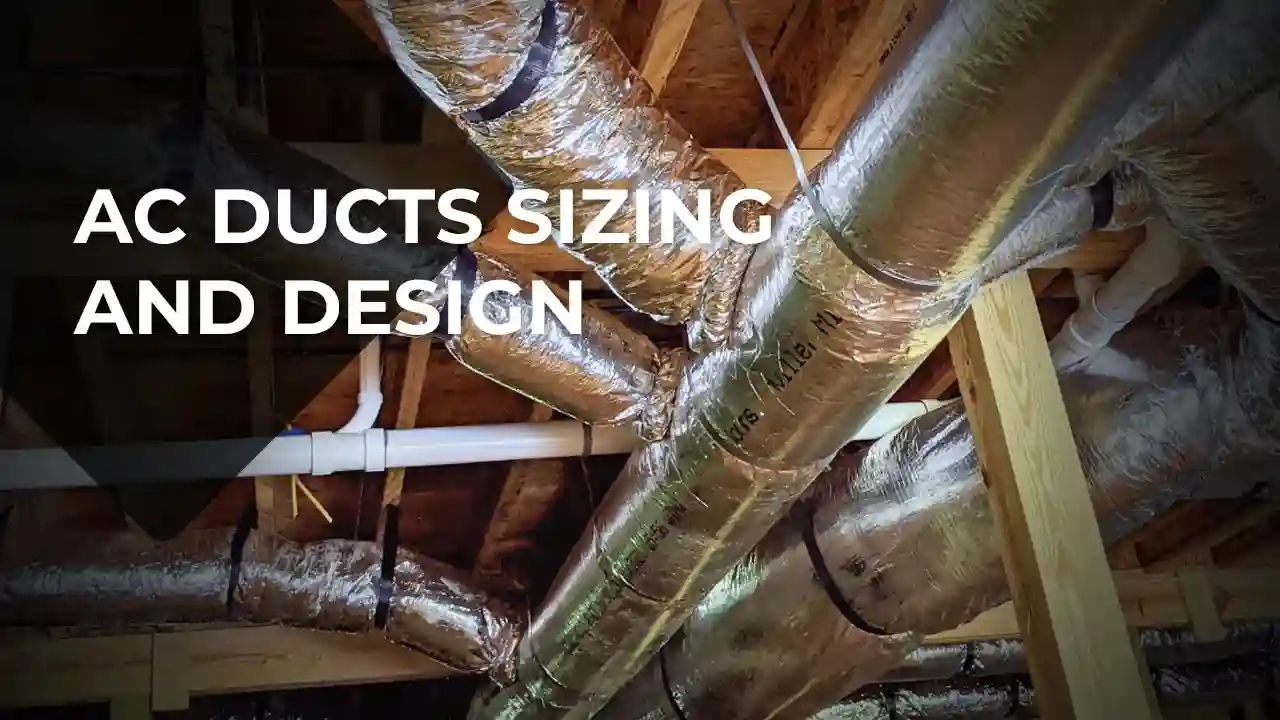29 May 2024

When it comes to air conditioning systems, the ductwork plays a crucial role in ensuring efficient and comfortable cooling throughout your home or office. Proper duct sizing and design are essential for achieving optimal airflow, which directly impacts energy costs, indoor air quality, and overall system performance.
In this blog post, we'll explore the importance of AC ducts sizing and design, the factors to consider, and some best practices to follow for optimal airflow.
Duct sizing refers to the process of determining the appropriate dimensions (diameter or cross-sectional area) of the ductwork to ensure adequate airflow. Improperly sized ducts can lead to several issues, including:
•Insufficient Airflow: If the ducts are too small, they can restrict airflow, resulting in inadequate cooling or heating in certain areas of the building.
• Excessive Noise: When air is forced through undersized ducts, it can create turbulence and generate noise, leading to an uncomfortable living or working environment.
• Energy Inefficiency: Oversized or undersized ducts can cause the HVAC system to work harder, increasing energy consumption and operating costs.
Several factors must be considered when sizing HVAC ducts, including:
• Room Sizes and Cooling/Heating Loads: The size and layout of the rooms, as well as their cooling and heating requirements, will influence the duct size needed to deliver sufficient airflow.
• Duct Length and Configuration: The length of the ductwork and the number of turns, bends, and transitions can affect airflow resistance and impact duct sizing.
• Equipment Specifications: The specifications of the HVAC equipment, such as the blower or air handler capacity, will determine the required airflow and, consequently, the duct sizing.
• Insulation and Duct Material: The type of duct material and insulation used can affect airflow resistance, which may need to be accounted for in duct sizing calculations.
In addition to proper sizing, the overall duct design is crucial for achieving optimal airflow. Here are some key considerations:
• Duct Layout: The layout of the ductwork should be carefully planned to minimize the number of turns, bends, and transitions, as these can increase airflow resistance and decrease efficiency.
• Balancing and Zoning: Proper duct balancing and zoning techniques can ensure even distribution of airflow throughout the building, preventing hot or cold spots.
• Return Air Pathways: Adequate return air pathways must be designed to allow for efficient air circulation and prevent air pressure imbalances.
• Duct Sealing: Sealing all duct connections and joints is crucial to prevent air leakage, which can significantly reduce system efficiency and indoor air quality.
• Duct Insulation: Insulating ducts that run through unconditioned spaces, such as attics or crawl spaces, can minimize energy losses and improve system performance.
To ensure optimal airflow and HVAC system performance, follow these best practices for duct sizing and design:
Hire a Professional: Engage the services of a qualified HVAC professional or contractor who has expertise in duct sizing and design. They will perform the necessary calculations and take into account all relevant factors.
Follow Industry Standards: Adhere to industry standards and guidelines, such as those provided by the Air Conditioning Contractors of America (ACCA) or the American Society of Heating, Refrigerating and Air-Conditioning Engineers (ASHRAE), for proper duct sizing and design.
Consider Future Needs: When designing the ductwork, take into account potential future expansions or modifications to the building or HVAC system, allowing for flexibility and adaptability.
Prioritize Airflow Over Aesthetics: While aesthetics are important, prioritize airflow and efficiency over duct concealment or visual appeal, as these can impact system performance.
Conduct Regular Maintenance: Regularly maintain and clean the ductwork to ensure optimal airflow and prevent the accumulation of dust, debris, or obstructions that could restrict airflow.
By following proper duct sizing and design principles, you can ensure that your air conditioning system operates at peak efficiency, providing consistent and comfortable cooling throughout your home or office. This not only improves indoor air quality and comfort levels but can also lead to significant energy savings and reduced operating costs over time.
If you're planning a new HVAC installation or considering upgrades to your existing system, it's advisable to consult with reputable ac ducting companies in UAE to ensure your ductwork is properly sized and designed for optimal airflow.
For those planning a new HVAC installation or considering upgrades, we recommend consulting with reputable ac ducting companies in UAE. They can ensure your ductwork is properly sized and designed for optimal airflow. If you'd like further insights on duct insulation and installation, be sure to read our next blog, "Keys to Efficiency and Comfort for AC Ducts Insulation and Proper Installation.